Taphonomy
Taphonomy









More Posts from Llamaslikesciencetoo and Others
First U.S. Climate Refugees Forced to Leave Their Vanishing Island Home
Isle de Jean Charles in Louisiana is vanishing into the sea and its residents must relocate.

The U.S. Department of Housing and Urban Development (HUD) awarded $48 million to the Biloxi-Chitimacha-Choctaw tribe who lives on this sinking island 80 miles southwest of New Orleans so that they may reestablish community further north.
Their home — or what was once a 22,000-acre island — has been reduced to a 320-acre strip where only 25 houses remain.

This makes members of the Louisiana tribe the first official climate refugees in the United States as rising sea levels have swallowed 98% of their land.
Find out more in this Huffington Post piece.
(Map via Google Maps. Sinking house photo by Karen Apricot via Flickr.)

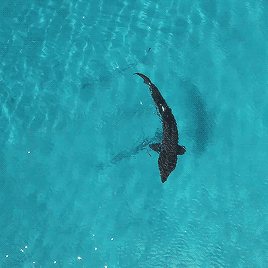
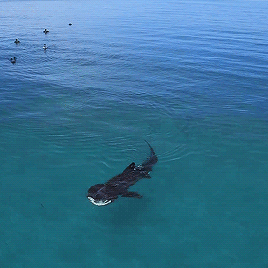
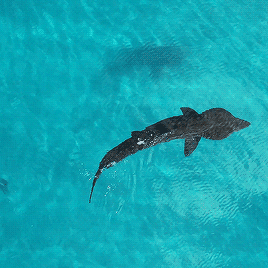










The naturalists’ miscellany : or Coloured figures of natural objects; drawn and described immediately from nature.
By Shaw, George, 1751-1813
Nodder, Elizabeth
Nodder, Frederick Polydore,
Publication info London :Printed for Nodder & co,1789.
Contributing Library: Museum Victoria
BioDiv Library
Is Ransom Okay I Heard A Coral Reef Died
It’s Jehol Biota Day!
The Jehol Biota is the ecosystem of the Yixian and Jiofotang Formations of northeastern China, dating between 133 and 120 million years ago in the Early Cretaceous (from the Valanginian to Aptian ages).
It is famous because of it’s method of preservation - there were ash eruptions periodically, and the fossils are Lagerstätten, meaning that they were exceptionally well preserved with articulated skeletons, soft tissues, stomach contents, and even coloration.
This has led to an amazing understanding of various types of dinosaurs and other prehistoric animals, especially very birdy dinosaurs.
These animals lived in forests around lakes, dominated by conifers but featuring the earliest flowering plants - Archaefructus, which may have been a water plant.

By Shizhao, CC BY-SA 2.5
There were dry seasons, but it was a mostly wet formation, as many of the plants grew in very wet habitats and probably stayed close to bodies of water.
The Yixian Formation was the older of the two main Jehol Formations, and featured many, many animals. Of invertebrates, there were spiders, crustaceans, dragonflies, flies, wasps, many other insects, and molluscs, of too many to list. Fish included the lamprey Mesomyzon, ray finned fishes such as Lycoptera, Peipiaosteus, Protopsephurus, Sinamia, and Yanosteus, and a potential shark. There were frogs and toads like Callobatrachus, Liaobatrachus, and Mesophryne, as well as a salamander, Liaoxitriton.

Callobatrachus by Emily Willoughby, CC BY-SA 3.0
There were mammals, too, of course - the stem-placental Acristatherium, the stem-marsupials Akidolestes, Maotherium, Zhangheotherium, and Sinodelphys, the stem-therian (Therians being the group of Marsupials and Placentals) Eomaia, the multituberculate (a group of mammals which seem to also be stem-therians) Sinobaatar, and a significant number of Eutriconodonts, a group of early derived mammals, including Chaoyangodens, Gobiconodon, Jeholodens, Juchilestes, Meemannodon, Repenomamus, and Yanoconodon.

Eomaia by Nobu Tamura, CC BY-SA 3.0
There were the weird early derived Saurians (the group consisting of Lepidosauromorphs and Archosauromorphs, so Extant Reptiles), Choristoderans - Hyphalosaurus, which is known from thousands of specimens, and Monjurosuchus. Lizards included Dalinghosaurus, similar to the modern Chinese Crocodile Lizard; Liushusaurus and Yabeinosaurus, lizards relatedx to modern geckos and skinks, and Xianglong, a gliding lizard. Turtles included Manchurochelys and Ordosemys, both Cryptodirans, a group including giant tortoises, sea turtles, tortoises, snapping turtles, and others.

Hyphalosaurus by Matt Martyniuk, CC BY 3.0

Xianglong by Nobu Tamura, CC BY 3.0
The heroes of the formation were, of course, the Avemetatarsalians. There were many pterosaurs - Beipiaopterus, Boreopterus, Cathayopterus, Elanodactylus, Eosipterus, Feilongus, Gegepterus, Gladocephaloideus, Haopterus, Moganopterus, Ningchengopterus, Pterofiltrus, and Zhenyuanopterus.

Ningchengopterus by Nobu Tamura, CC BY 3.0
Ornithischians included the ornithopods Bolong, Jeholosaurus, and Jinzhousaurus, the ankylosaur Liaoningosaurus, and the ceratopsians Liaoceratops and Psittacosaurus. There were sauropods too - the titanosauriform Dongbeititan, a potential titanosaur, and an animal that has for now been referred to Euhelopus. But the real heavyweights were the theropods.

Jeholosaurus by @ryuukibart
There were the tyrannosauroids Yutyrannus - one of the best known tyrannosauroids with feathers - and Dilong; the compsognathus Huaxiagnathus, Sinocalliopteryx, and Sinosauropteryx - the first non-avian dinosaur known to have feathers, and also with known coloration; early Ornithomimosaurs such as Hexing and Shenzhousaurus; the early derived maniraptoran Yixianosaurus; Beipiaosaurus, a therizinosaur; and tons of Chickenparrots, such as Similicaudipteryx, Protarchaeopteryx, Ningyuansaurus, Incisivosaurus, and Caudipteryx.

Yutyrannus, model from “Dinosaurs Among Us”, photo by me

Sinosauropteryx by Matt Martyniuk, CC BY-SA 3.0
There were many Dromaeosaurids (raptors), such as Graciliraptor, Tianyuraptor, Zhenyuanlong - a raptor known from nearly complete feather traces, including extremely large wings - and Sinornithosaurus, the first Dromaeosaurid found with feathers. There were also lots of Troodontids, such as Sinusonasus, Sinovenator, and Mei, as well as unnamed members of both groups. There were early-derived Avialans such as Zhongornis, Jixiangornis, Confuciusornis, and Changchengornis. There were loads of Enantiornithines, such as Bohaiornis, Eoenantironis, Dalingheornis, Liaoningornis, Longirostravis, and Shanweiniao - an Enantiornithine that had a tail fan like modern birds. There were also Euornithines - the group which contains modern birds - such as Longicrusavis, Hongshanornis, and Archaeorhynchus. In short, this was an extremely birdy formation indeed.

Zhenyuanlong by Emily Willoughby, CC BY-SA 4.0

Shanweiniao by Nobu Tamura, CC BY 3.0
The Jiuofotang Formation was slightly younger, but was similar to the Yixian in terms of the animals there. There were ray finned fishes such as Jinanichthys, Lycoptera, Peipiaosteus, Protsephurus, and Sinamia. There was the mammal Liaoconodon, a Eutriconodont, as well as an unnamed mammal similar to Eomaia from the Yixian Formation. There were also Choristoderans like Philydrosaurus, Ikechosaurus, and Liaoxisaurus.

Liaoconodon by Dylan Bajda, CC BY-SA 4.0
There were many, many, many pterosaurs. This included Chaoyangopterus, Eoazhdarcho, Guidraco, Ikrandraco, Jidapterus, Liaoningopterus, Liaoxipterus, Linlongopterus, Nemicolopterus, Nurhachius, Shenzhoupterus, and Sinopterus. And, as we shall see, there were a lot of flying theropods as well, indicating that the two groups did live alongside one another just fine, and the common narrative of “birds replaced pterosaurs” has little foundation in the fossil record.

Ikrandraco, by Fabrizio De Rossi, from www.pteros.com

Chaoyangopterus, by Joschua Knüppe, from www.pteros.com
There were only a few Ornithischians - namely Chuanqilong, an ankylosaur, and Psittacosaurus, a ceratopsian. There is also an unnamed titanosaur from the formation. As for theropods, there were a lot. The tyrannosauroid Sinotyrannus was the largest predator there, there was the Chickenparrot Similicaudipteryx, and of course one of the most famous raptors, Microraptor, which was a four-winged Dromaeosaurid that we know had iridescent black feathers.

Microraptor by @artisticthingem
There were many early derived Avialans, such as Confuciusornis, Dalianraptor, Omnivoropteryx, Sapeornis, Shenshiornis, Zhongjianornis, and my personal favorite, Jeholornis, a theropod we know was a seed-eater, which is actually quite hard to determine from fossils. There were many Enantiornithines, such as Alethoalaornis, Boluochia, Cathayornis, Cuspirostrisornis, Dapingfangornis, Eocathayornis, Gracilornis, Huoshanornis, Largirostrornis, Longchengornis, Longipteryx, Rapaxavis, Xiangornis, and one of my favorites, Sinornis, which is thought to have perched. As for Euornithines, there was Chaoyangia, Jianchangornis, Parahongshanornis, Schizooura, Songlingornis, Yanornis, and Yixianornis.

Jeholornis by Matt Martyniuk, CC BY-SA 3.0

Sinornis, by Pavel Rhia, CC BY-SA 3.0
It’s plain to see why the Jehol Biota is so fascinating. At least for me, I love it because it’s clearly one of the best pictures we have of Pennaraptoran evolution - the amount of birdie dinosaurs is absolutely ridiculous. But there’s really something for everyone here - there are titanosaur-like things, some of the earliest Ceratopsians, tons of Pterosaurs, weird Choristoderans, and even some insights into the evolution of early mammals and different types of amphibians and fish, as well as the first flowering plants. The Jehol Biota is one of the best ecosystems we know about, and it definitely deserves celebration!
Sources:
https://en.wikipedia.org/wiki/Jehol_Biota
https://en.wikipedia.org/wiki/Jiufotang_Formation
https://en.wikipedia.org/wiki/Yixian_Formation


The tardigrade genome has been sequenced, and it has the most foreign DNA of any animal
Scientists have sequenced the entire genome of the tardigrade, AKA the water bear, for the first time. And it turns out that this weird little creature has the most foreign genes of any animal studied so far – or to put it another way, roughly one-sixth of the tardigrade’s genome was stolen from other species. We have to admit, we’re kinda not surprised.
A little background here for those who aren’t familiar with the strangeness that is the tardigrade – the microscopic water creature grows to just over 1 mm on average, and is the only animal that can survive in the harsh environment of space. It can also withstand temperatures from just above absolute zero to well above the boiling point of water, can cope with ridiculous amounts of pressure and radiation, and can live for more than 10 years without food or water. Basically, it’s nearly impossible to kill, and now scientists have shown that its DNA is just as bizarre as it is.
So what’s foreign DNA and why does it matter that tardigrades have so much of it? The term refers to genes that have come from another organism via a process known as horizontal gene transfer, as opposed to being passed down through traditional reproduction.
Horizontal gene transfer occurs in humans and other animals occasionally, usually as a result of gene swapping with viruses, but to put it into perspective, most animals have less than 1 percent of their genome made up of foreign DNA. Before this, the rotifer – another microscopic water creature – was believed to have the most foreign genes of any animal, with 8 or 9 percent.
But the new research has shown that approximately 6,000 of the tardigrade’s genes come from foreign species, which equates to around 17.5 percent.
“We had no idea that an animal genome could be composed of so much foreign DNA,” said study co-author Bob Goldstein, from the University of North Carolina at Chapel Hill. “We knew many animals acquire foreign genes, but we had no idea that it happens to this degree.”
Continue Reading.
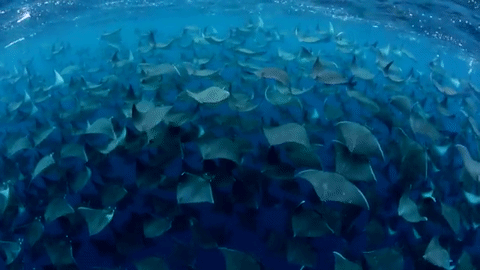
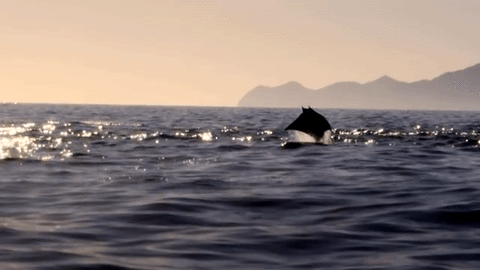
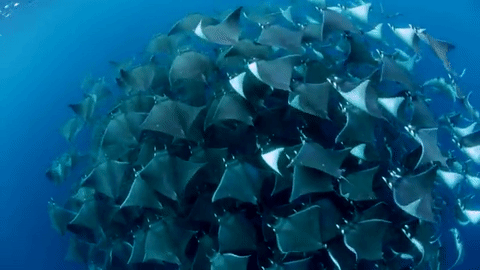

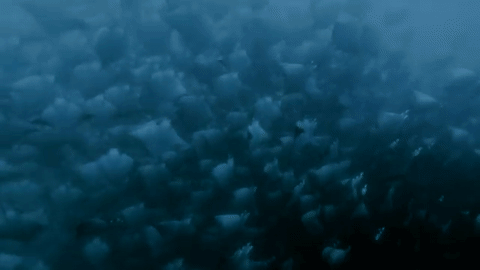
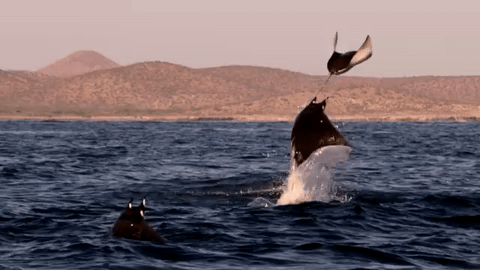
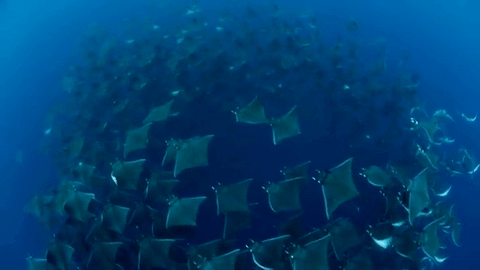
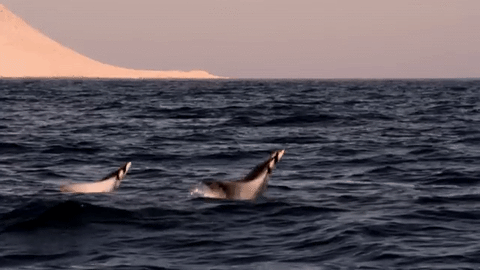
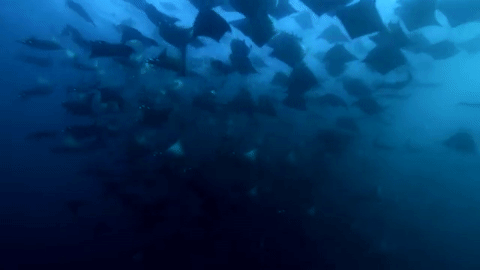
closely related to sharks but with long, flat bodies and wing-like pectoral fins, mobula rays are ideally suited to swooping through the water - here off the gulf of california - yet seem equally at home in the air, so much so that they have earned the name “flying rays”. mobula rays can reach heights of more than two metres, remaining airborne for several seconds.
mobula rays are quite elusive and difficult to study, so biologists are not quite sure why they jump out of the water. theories vary from a means of communication, to a mating ritual (though both males and females jump), or as a way to shed themselves of parasites. they could also be jumping as a way of better corralling their pray, as seen with them swimming in a circular formation.
what is known about mobula rays is that they reach sexual maturity late and their investment in their offspring is more akin to mammals than other fishes, usually producing just a single pup after long pregnancies, all of which makes them extremely vulnerable to commercial fishing, especially as a species that likes to come together in large groups.

This squid, Taonis borealis, is one of the many interesting deep-sea organisms MBARI’s Midwater Ecology group observed on their research expedition in October 2012. You can learn more about their research and see more of the interesting animals they found by reading the group's cruise logs.








the bajau laut are some of the world’s last true sea normads, living as they have for centuries almost entirely in the waters of the coral triangle (said to contain 75% of the world’s coral species) on long boats known as lepa lepa.
hunters of fish, pearls and sea cucumbers, the bajau people free dive to depths of 20 meters, hold their breath for up to three minutes, and spend up to 60% of their time in the water submerged - the equivalent of a sea otter. it is a common practice amongst bajau people to intentionally burst their ear drums at an early age to deal with the problem of equalizing.
as photographer james morgan explains, “traditional bajau cosmology - a syncretism of animism and islam - reveals a complex relationship with the ocean, which for them is a multifarious and living entity. there are spirits in currents and tides, in coral reefs and mangroves.” the bajau people, for example, will not spit in the ocean.
in the last few decades, increasingly depleted fish stocks and government efforts have forced many to settle permanently on land and abandon a life of self sufficiency known as cari laut, or ‘searching the ocean’. a dwindling few, however, still choose to live the majority of their lives at sea.
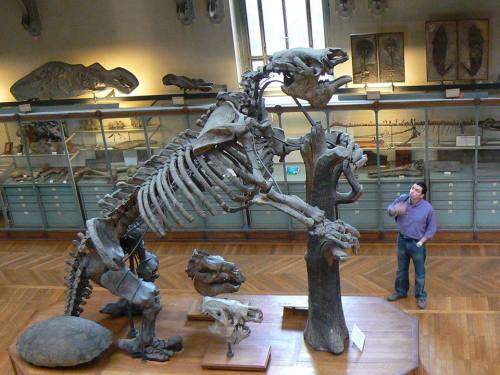
Behemoths of the ancient past…and future?
One thing that many known prehistoric creatures have in common - and the thing that most people find fearsome - is that a lot of them were huge. Everyone knows about the gigantism of T-rex, Diplodocus, and Megalodon. But there were also ground sloths the size of modern-day elephants, dragonflies the size of hawks, and cockroaches the size of domestic cats (!)
Keep reading
-
 heidivanderlee liked this · 1 year ago
heidivanderlee liked this · 1 year ago -
 utterlyimpossible liked this · 2 years ago
utterlyimpossible liked this · 2 years ago -
 rosebella2016 liked this · 3 years ago
rosebella2016 liked this · 3 years ago -
 t-rex-snack reblogged this · 4 years ago
t-rex-snack reblogged this · 4 years ago -
 sinnamonrollkitten liked this · 4 years ago
sinnamonrollkitten liked this · 4 years ago -
 hugol1028 liked this · 5 years ago
hugol1028 liked this · 5 years ago -
 utenanthy liked this · 6 years ago
utenanthy liked this · 6 years ago -
 mangogutts liked this · 6 years ago
mangogutts liked this · 6 years ago -
 cavalreapers liked this · 6 years ago
cavalreapers liked this · 6 years ago -
 lilredfaerie reblogged this · 6 years ago
lilredfaerie reblogged this · 6 years ago -
 alycats liked this · 6 years ago
alycats liked this · 6 years ago -
 pdivy liked this · 6 years ago
pdivy liked this · 6 years ago -
 funeralfire liked this · 6 years ago
funeralfire liked this · 6 years ago -
 orbit-jet liked this · 6 years ago
orbit-jet liked this · 6 years ago -
 ruusunnuppunen liked this · 6 years ago
ruusunnuppunen liked this · 6 years ago -
 dunkletime-blog liked this · 6 years ago
dunkletime-blog liked this · 6 years ago -
 the-friday-knight liked this · 6 years ago
the-friday-knight liked this · 6 years ago -
 wheretheivygrowss liked this · 7 years ago
wheretheivygrowss liked this · 7 years ago -
 rocketrocky liked this · 7 years ago
rocketrocky liked this · 7 years ago -
 cord137 liked this · 7 years ago
cord137 liked this · 7 years ago -
 history-onyx reblogged this · 7 years ago
history-onyx reblogged this · 7 years ago -
 alithographica liked this · 7 years ago
alithographica liked this · 7 years ago -
 history-onyx liked this · 7 years ago
history-onyx liked this · 7 years ago -
 zestful-guitar-blog reblogged this · 7 years ago
zestful-guitar-blog reblogged this · 7 years ago -
 arocanthosarus liked this · 7 years ago
arocanthosarus liked this · 7 years ago -
 antarctic-arcanine liked this · 7 years ago
antarctic-arcanine liked this · 7 years ago -
 gay-rites reblogged this · 7 years ago
gay-rites reblogged this · 7 years ago -
 tervingi reblogged this · 7 years ago
tervingi reblogged this · 7 years ago -
 figmentforms liked this · 7 years ago
figmentforms liked this · 7 years ago -
 cloudair liked this · 7 years ago
cloudair liked this · 7 years ago -
 cazzylimerence liked this · 7 years ago
cazzylimerence liked this · 7 years ago -
 mvizcarra reblogged this · 7 years ago
mvizcarra reblogged this · 7 years ago -
 orbit-jet reblogged this · 7 years ago
orbit-jet reblogged this · 7 years ago -
 deinonychus reblogged this · 7 years ago
deinonychus reblogged this · 7 years ago -
 deliciouslytinyface reblogged this · 8 years ago
deliciouslytinyface reblogged this · 8 years ago -
 celestial-weiner-dog liked this · 8 years ago
celestial-weiner-dog liked this · 8 years ago -
 erudition-science reblogged this · 8 years ago
erudition-science reblogged this · 8 years ago -
 larkspurious liked this · 8 years ago
larkspurious liked this · 8 years ago -
 just-call-me-ishmael reblogged this · 8 years ago
just-call-me-ishmael reblogged this · 8 years ago -
 wilde-woolf reblogged this · 8 years ago
wilde-woolf reblogged this · 8 years ago -
 strawberrymoron liked this · 8 years ago
strawberrymoron liked this · 8 years ago -
 lifeacrossthepond liked this · 8 years ago
lifeacrossthepond liked this · 8 years ago -
 light-the-pyre reblogged this · 8 years ago
light-the-pyre reblogged this · 8 years ago
Mainly interested in ecology, but also the entirety of science.
179 posts